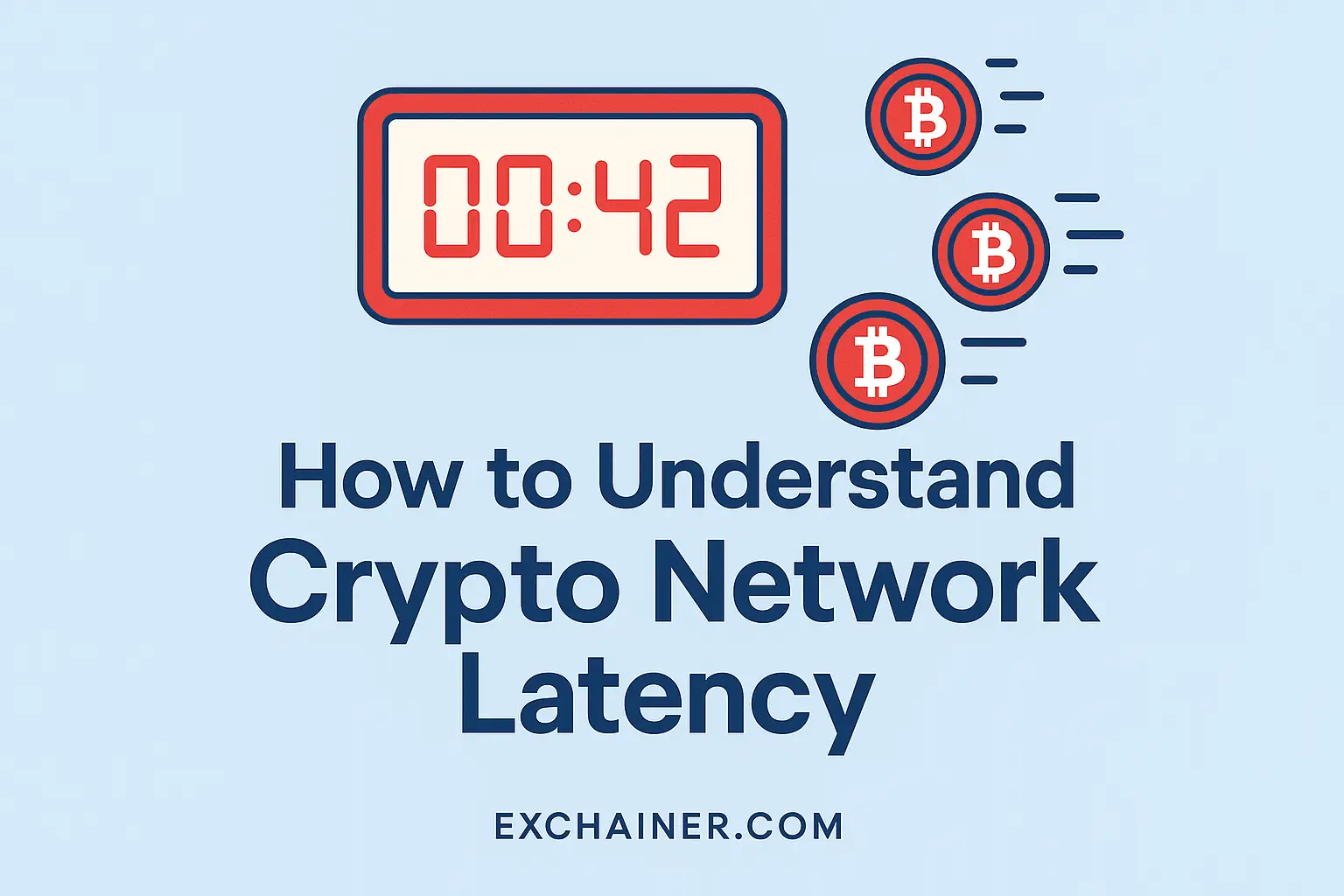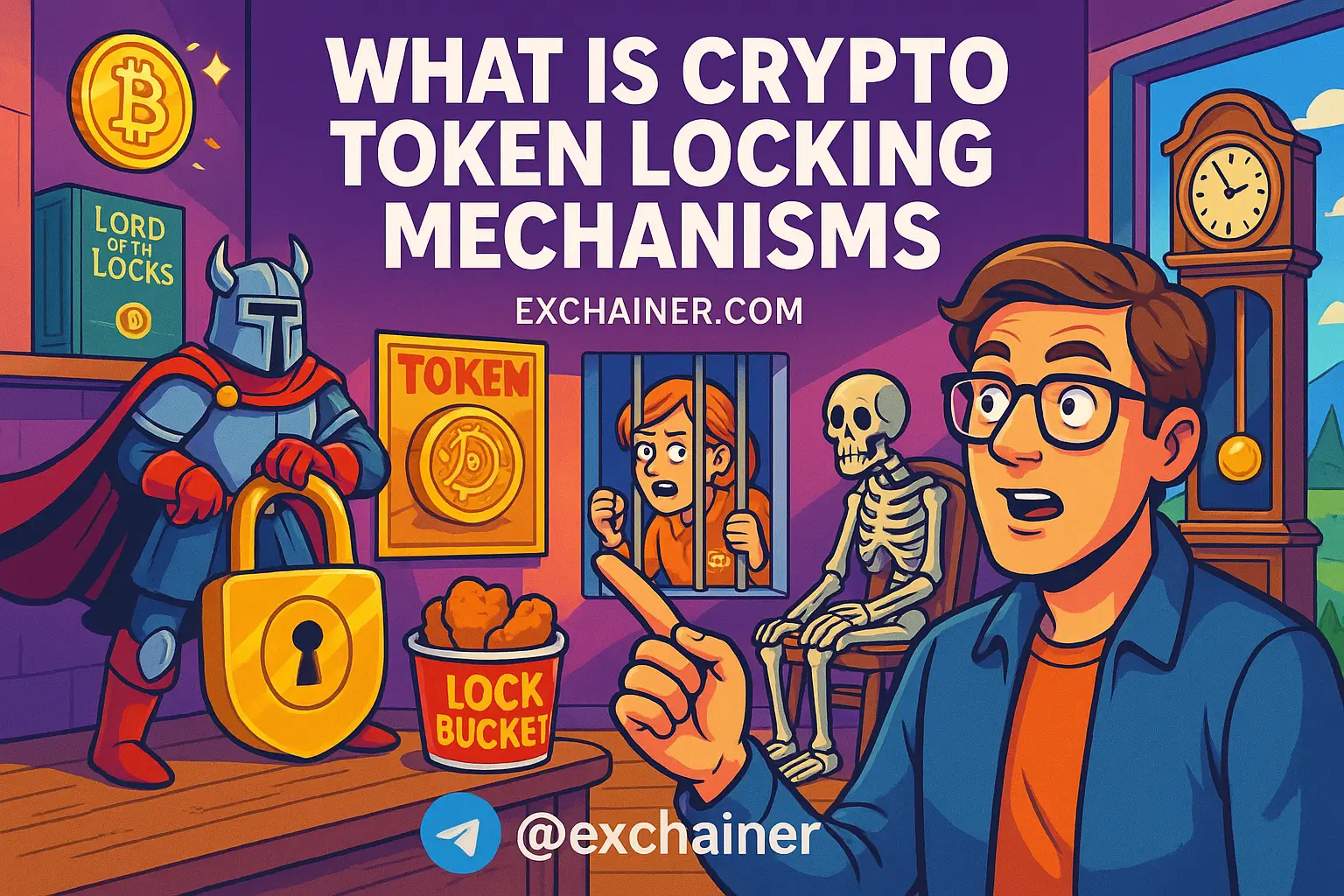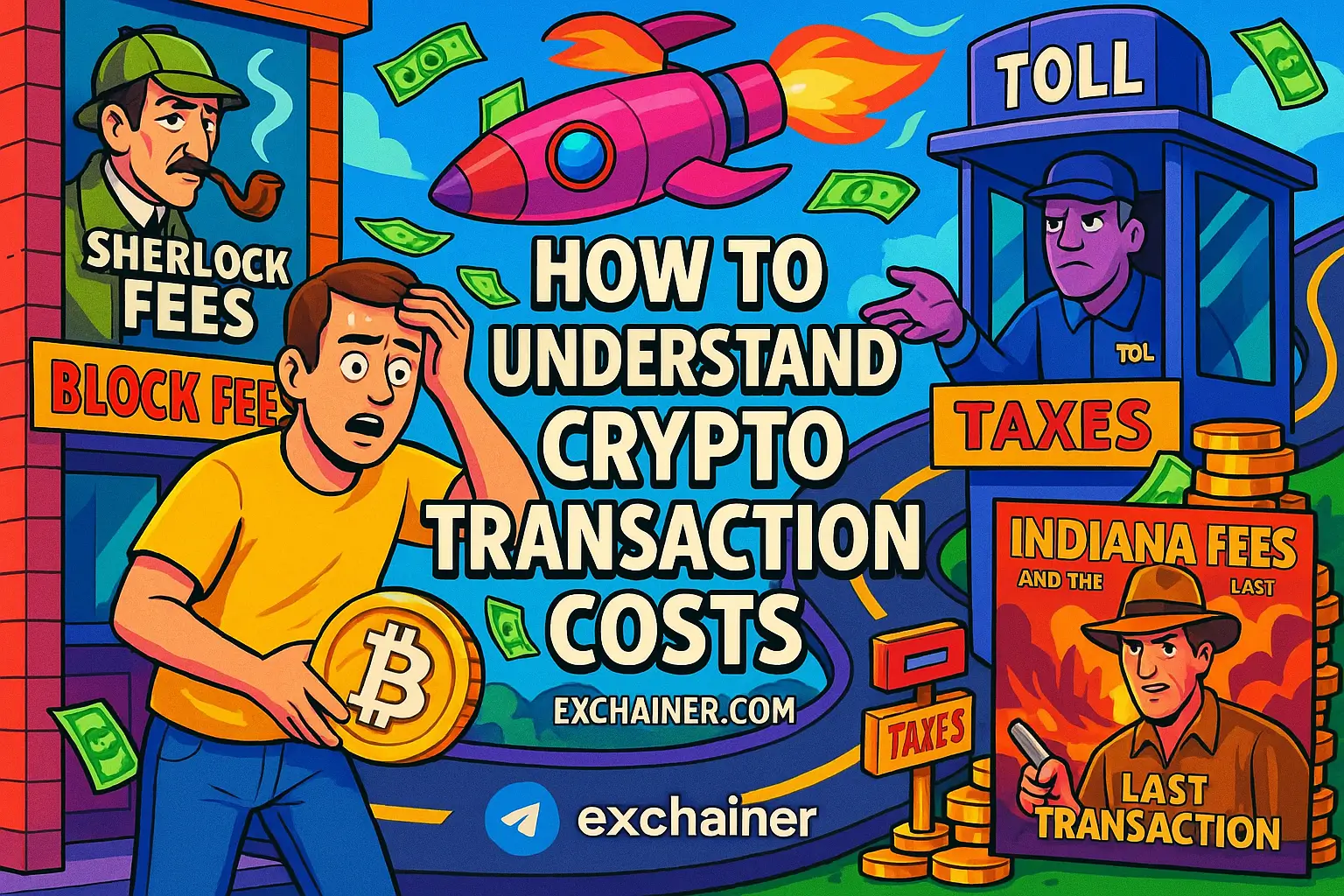Friends, if you’ve ever wondered why some crypto transactions feel lightning-fast while others seem to take forever, you’ve stumbled upon one of the industry’s trickiest, yet most fascinating topics: network latency. In the fast-evolving world of decentralized finance (DeFi), miner extractable value (MEV), and ever-rising transaction fees, understanding crypto network latency is no longer just a nerdy technical detail; it’s a game-changer for anyone who trades, builds, or even just holds crypto.
So, what exactly is crypto network latency? At its core, it refers to the delay between sending and receiving information across the blockchain network. This delay can be caused by multiple factors — from how blocks propagate through nodes to how transactions bounce around the network before validation. Network latency isn’t just a number in some log file; it directly affects your user experience, security of the blockchain, and even miners’ rewards. For example, high latency can cause stale blocks, increasing the chance of forks and leading to wasted computational effort.
In this article, we’ll break down everything you need to know about crypto network latency. You’ll learn how latency is measured, what causes delays in block and transaction propagation, the role of peer-to-peer network topology, and tools for measuring latency accurately. Plus, we’ll dive into effective strategies to reduce delays, so you can optimize your node operations or better time your trades.
This guide is perfect for a diverse crowd: node operators curious about performance tweaks, developers wanting to build more efficient protocols, traders seeking edge in execution, and researchers diving into blockchain network dynamics. Ready to take a deep dive and master the subtle art of managing network latency? Let’s get started!
Block Propagation and Delays
Blocks are the backbone of every blockchain network, bundling transactions into batches and linking them securely. But how do these blocks travel from one part of the network to another? That’s where block propagation comes in — the process of broadcasting a newly minted block to every node for validation and acceptance.
Imagine a miner successfully mines a block. They immediately broadcast it to their peers, who verify the block’s transactions and validity rules. These peers, in turn, relay the block further. The speed at which this happens defines the block propagation delay. But why is this delay critical?
When block propagation is slow, other miners might unknowingly keep mining on an older block, unaware a new block exists. This leads to the creation of orphan or stale blocks — copies of blocks not accepted in the final blockchain. Orphan blocks represent wasted work and reduce network security by increasing fork rates. Plus, miners miss out on rewards, discouraging investment in honest mining.
Several factors contribute to block propagation delay:
Block size plays a major role — bigger blocks take longer to transmit over the network. Validation time matters, too; more complex blocks require more computation to verify. Network topology and bandwidth limitations between nodes further shape delays, especially if nodes connect via slow or distant peers.
Block Relays and Compact Block Protocols
To fight propagation delays, blockchain developers introduced innovations like compact blocks. Instead of sending the full block with all transactions, nodes send only the differences between their mempool and the new block. Since most nodes already have most transactions cached, this drastically reduces data sent, speeding up propagation.
Block relay networks, such as FIBRE for Bitcoin or Flashbots for MEV-sensitive Ethereum blocks, act as dedicated highways for blocks, bypassing slower public routes. These specialized relay networks lower latency and help reduce orphan rates.
Impact on Fork Probability and Miner Strategies
Propagation delays influence the chance of forks occurring. When some miners don’t see a newly published block immediately, multiple chains might form temporarily. This stale rate can incentivize sophisticated strategies like selfish mining, where miners keep newly found blocks secret to gain advantage. Understanding and minimizing latency is key in countering such tactics and strengthening network fairness.
Transaction Propagation Time in Crypto Networks
While blocks bundle transactions, individual transactions have their own journey, often with distinct latency concerns. Transaction propagation time refers to the delay between when a transaction is created and when it reaches most nodes’ mempools (the waiting area for unconfirmed transactions).
This delay differs from block propagation time since transactions are relayed individually, and often repeatedly, before inclusion in any block. Quick propagation is vital for proper mempool synchronization — if nodes don’t share the same view, some transactions can be delayed or missed. This fragmentation can skew fee estimations and open doors for front-running and MEV exploits where opportunistic actors reorder or censor transactions.
Key factors affecting transaction propagation include the transaction size, fee rate attached, and node policies regarding which transactions they accept and relay. Nodes might filter out low-fee transactions or suspicious-looking ones to save bandwidth and manage risk.
Mempool Divergence and Its Trading/UX Consequences
When different nodes don’t have the same pending transactions due to propagation delays or filtering, we call this mempool divergence. For traders relying on decentralized exchanges or arbitrage bots, this means their trades might execute slower or at worse prices than anticipated. For regular users, it translates to confusing experience as transactions seem stuck or mysteriously pending.
Techniques to Speed Transaction Relay
To combat slow propagation, several practical tools exist:
Fee bumping allows resubmitting a transaction with a higher fee to incentivize faster relay. Transaction batching groups multiple payments into one to reduce network overhead. The replace-by-fee (RBF) mechanism enables replacing unconfirmed transactions with new ones offering better fees. Relay services specialize in speedy transaction broadcasting to widen reach quickly.
P2P Network Latency and Topology
The blockchain network is a vast peer-to-peer (P2P) web where nodes connect directly to each other, sharing data without centralized servers. The design and quality of this P2P network heavily influence overall latency.
Quality of connections matters. A node connected to many peers geographically close or with strong bandwidth will experience lower latency. Conversely, poor connections via slow or distant peers increase delay. The topology — meaning which nodes connect to whom — shapes how many hops data must travel, affecting speed.
However, more peers mean more bandwidth and CPU use, so there’s a balance. Too few peers limit connectivity and resilience, too many overwhelm resources.
Node Discovery and Peer Selection Strategies
Nodes use discovery protocols to find peers, balancing inbound and outbound connections. Whitelisting trusted peers or strategically choosing diverse nodes across regions improves robustness and latency. For instance, having peers in different internet service providers (ISPs) or autonomous systems (AS) provides alternative routes if one path slows down.
Geographic and AS-level Effects
Physical distances translate into delays over fiber optic cables and submarine lines, while routing through multiple autonomous systems can add unpredictable hops. For example, a node in Europe connecting mostly to US east coast nodes will see higher latency than one linked to European peers. Understanding these effects helps optimize node placement and peer selection.
Measuring Crypto Network Latency
Measuring latency is key to diagnosing network health and improvements. Several metrics help paint the picture:
Round-trip time (RTT) measures how long a message takes to go from one node to another and back. Propagation time focuses on how quickly a block or transaction reaches most nodes. Validation time captures how long it takes nodes to check new data. Time-to-first-seen
Approaches to measurement include active probing — sending test messages and recording responses — and passive observation by analyzing network traffic or blockchain logs. Timestamp accuracy is crucial, as clocks out of sync can create noise.
Tools and Platforms
Classic network tools like traceroute or ping trace paths and measure latency. Protocol-specific tools analyze blockchain messages; for Bitcoin, projects like Bitcoin Relay network provide insights. Ethereum’s parity clients include latency monitoring features. For continuous tracking, Prometheus and Grafana dashboards visualize latency trends.
Designing Experiments
To get reliable latency data, experimenters use control groups, baselines, and synchronized clocks via Network Time Protocol (NTP) or Precision Time Protocol (PTP). Capturing accurate timestamps on block and transaction broadcasts allows understanding delays within milliseconds.
Reducing Latency: Optimization and Mitigation Strategies
Decreasing crypto network latency combines protocol tweaks, smarter infrastructure, and operational know-how. But be aware — there is always a trade-off between performance and decentralization or security.
Protocol optimizations include compact blocks mentioned earlier, header-first synchronization to speed initial downloads, and cut-through relays that forward data before full validation completes. Gossip-style improvements refine how nodes share information efficiently.
On infrastructure, specialized relay networks like FIBRE or Flashbots facilitate swift block transmission. Deploying geographically distributed nodes ensures users connect to nearby peers. Peering agreements and bandwidth quality of service (QoS) settings prioritize critical blockchain traffic over less important data.
Additionally, monitoring tools can trigger automated responses when latency thresholds breach limits, such as rotating peers or adjusting fee and relaying policies dynamically.
When to Prioritize Latency Improvements
High-frequency traders, decentralized exchange operators, and wallet developers benefit most from aggressive latency reduction. For casual holders, latency tweaks might be marginal but still improve user experience. Balancing costs and benefits depends on your role in the ecosystem.
Conclusion
Friends, crypto network latency might sound like a technical complexity hidden behind blockchain’s magic veil, but it profoundly impacts security, fairness, and usability. From the journey of blocks racing across nodes, to transactions dancing in the mempool, and the intricate web of peer-to-peer connections, every millisecond shapes the crypto experience.
Understanding the intricacies like block propagation delays, transaction relay times, and peer network structures equips node operators and developers with the tools to optimize performance. Traders gain insight into front-running risks connected to mempool dynamics. Measurement tools help keep a finger on the pulse of network health, while mitigation strategies range from smarter protocols to dedicated relay networks.
Here’s a quick checklist for you:
For node operators: Measure your node’s propagation times, optimize peer selection, and consider joining low-latency relay networks.
For developers: Implement and test compact protocols, improve gossip mechanisms, and design with latency in mind.
For traders: Monitor mempool status, adjust fee strategies, and stay aware of network backlogs to avoid surprises.
The crypto world is moving fast, literally and figuratively, and latency improvements continue as new protocols and layer-2 scaling solutions emerge. Keeping latency low isn’t just a technical challenge — it’s a vital part of building resilient, user-friendly, and fair blockchain networks.
Ready to dig deeper into crypto concepts or sharpen your trading edge? Check out our handy beginner guides in Crypto 101, get smart on platform options in our Exchange Reviews, or find the best wallets and tools at Tools and Wallets. Your crypto journey just got a little less latent.
For more on network latency measurement techniques, you might explore Bitcoin Wiki on Block Propagation and Ethereum Network Stats for real-time latency tracking.












